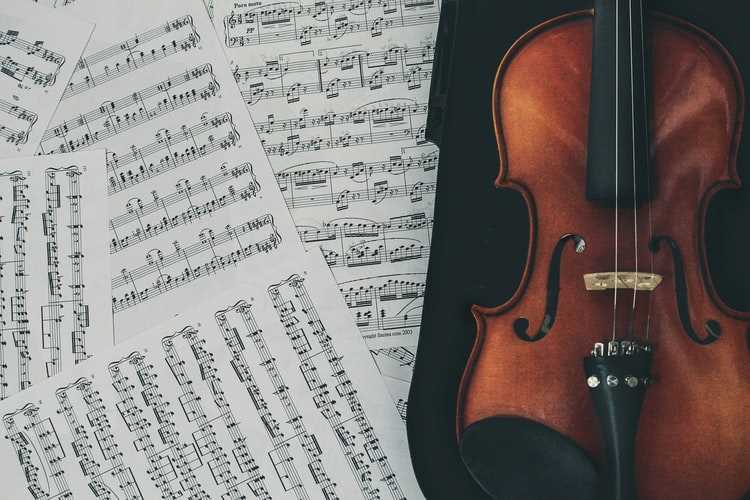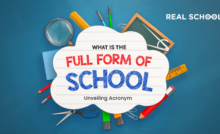How to Teach Violin for Kids? Things to Know Before Learning Violin


Music should be a part of our everyday life. Violin is a musical instrument that has been increasingly popular in recent years. Music is one of the most effective ways to enhance your child’s brain.
Violin learning for kids can be a way to improve the coordination skills of your child. Humans learn better while they are young, especially when it comes to musical instruments like the violin. Let’s figure out how to teach violin for kids.
How to Teach Violin for Kids?
If your little sunshine has shown an interest in the violin, the next question that comes to mind is how to teach violin for kids. Violin for childrens can be tricky in the beginning but don’t worry, they will get used to it and will slowly become a master. Here are some tips on how to teach violin for kids.
1. Find Their Violin
The first and foremost step in violin learning for kids is to get a violin suitable for your kid. Violin for childrens that you select should be designed depending on the age and size of your child because if your child is less than ten years old he/she cannot use a violin used by professionals or adults. Most music stores will allow your youngster to try out an instrument and will assist you in finding the proper size.
There are even violin stores that allow you to have a violin for rent. Suppose, your kid is just getting started with violin and you are not sure whether they will stick with it. So most probably, you will be in a dilemma whether I should buy an actual violin for childrens from a store? In such cases, you can rely on such rental stores to assess whether your youngster has a genuine interest in studying the violin.
Keep in mind that when it comes to musical instruments, “you get what you paid for.” Instruments that are less expensive are generally manufactured of inferior materials and may not sound as pleasant.
2. Figure out Your Child’s Violin Style
Violins are typically thought of as a classical instrument; however, that doesn’t suggest you can just play one genre of style with them. Lindsey Sterling, for example, has built a reputation for herself as a contemporary violinist who incorporates dance into her concerts. Similarly, your child is fond of a particular kind of style – figure it out!
Discuss with your youngster why they want to learn to play the violin. Do they want to learn to enhance their own life by learning to play a musical instrument, or do they really want to join an orchestra someday? Even though they are really young children, they will have their reasons and goals and your duty as a parent is to guide them because you’ll be able to share these goals with their violin teacher, and together, you can help them to reach where they would like to go once you know.
Also read: Easy Zumba Dance Workout for Kids: A Fun and Easy Way to Keep Your Kids Healthy and Fit!
3. Find a Bow that Fits your Child
The bow is sold separately from the violin at certain music retailers, particularly those that specialize in higher-end musical instruments. While bows may appear to be the same, this is not the case. A bow has so much to do as it is important to the sound.
You should choose a bow that suits your child’s hand because it has a crucial role in producing the correct tone, rhythm, articulation, etc. Bring your child and their violin instructor or an experienced violin player with you if feasible to assist you in choosing the proper bow and instrument.
4. Keep Both Hands Engaged
Another way to how to teach violin for kids is when teaching a kid to play the violin, remember that both hands should be engaged from the very first session. Otherwise, tension might be created in the working hand by the idle hand. A youngster can only focus on one new item at a time and it can be difficult for them at first.
The tutor should help the kid with the bow grip and movements so that the child is not conscious of it. The violin hold should be the focus of the first lesson. While practicing at home also encourages them to engage both hands.
Also read: Workout for Kid Athletes at Home: Make them Ready for Future with These Simple Exercises
5. Following Directions
Violin is an instrument that teaches kids discipline. There isn’t a lot of room for error when it comes to how to hold the instrument or what to play first, especially in the beginning. They’ll acquire more flexibility as they learn how to use it, but the first few months are usually quite structured.
Violin for childrens, understanding its secrets can be difficult in the beginning, especially its directions. That’s OK. Don’t give up. Music is tough to learn, and practicing is a challenging aspect of that process.
It may be aggravating at times! Allowing children to build grit and perseverance before beginning music instruction can aid them in overcoming those obstacles. When kids have had prior practice, they get accustomed to and familiar with the daily habit.
6. Work on Fine Motor Skills
Fine motor skills are important in violin learning for kids, just as they are in writing. However it is not necessary for children to have flawless fine motor skills before beginning string instruments for children (this will come with practice), it is helpful to get some control before beginning.
Consider practicing holding a pencil appropriately or cutting with scissors with your child, even if he or she doesn’t really need to know every sequence of letters. When playing the violin for youngsters, try to focus on abilities with both hands, as both will be used.
Also read: Easy Morning Exercise for Kids at Home: Make Your Child More Active and Focused
Summing Up
We cannot learn any kind of musical instrument without making any kind of sound. So while learning violin, in the initial days they will make so much noise and probably your home would be a mess. But believe the fact that if you stick it out, violin lessons for kids may open up a world of possibilities for your young star.
Recent Posts
What are the Advantages of Online Teaching at The Real School?
In the article -"What are the Advantages of Online Teaching at The Real School?" we…
What is the Full Form of School?: Unveiling the Acronym
The term "school" carries profound significance in the realm of education, representing more than just…
What is Math Full Form?: Cracking the Code
Mathematics, often referred to as "Math," is a subject that elicits various reactions from students…
What is Full Form of Homework?: Decoding Academics
Homework, an integral part of the academic journey, often raises questions about its purpose and…
What is Full Form of Teacher?: Demystifying Education
In the intricate tapestry of education, teachers stand as the pillars shaping the intellectual and…
What is Real Education?: Discovering Its Essence and Impact
The concept of real education is evolving, transcending traditional views that equate it solely with…


